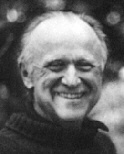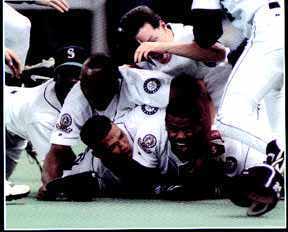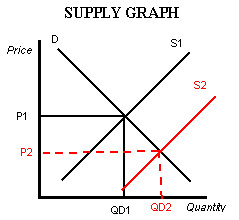
|
| Frank Patrick Herbert (1920-1986):
newspaperman, cameraman, radio commentator, oyster-diver, judo instructor,
jungle survival instructor, lay analyst, Navy photographer, serious amateur
scientist, ecologist, Tacoma native, Seattle Mariners fan and second-tier
science fiction writer. |
I don’t read it often, but I find that
there’s often an odd, surreal quality to what gets reported in USA Today.
Many years back, I remember a boxed story in the sports section with a
picture of a forgotten pitcher (a Seattle Mariner, I think). The heading
was something like “Joe Blow’s Five Favorite Frank Herbert Novels.” For
the non-science fiction fans out there, Frank Herbert is best known for
his novel Dune (but see link for many other books), which was followed
by a series of sequels (Dune Messiah,
Children of Dune, etc.).
Turns out the pitcher’s five favorite Frank Herbert novels were, in order:
|
Dune
Dune Messiah
Children of Dune
another Dune sequel
another Dune sequel
|
With the possible exception of Arrakis,
the desert world on which much of Dune takes place, on what planet
does that qualify as news, let alone sports news? |

|
|
Seattle Mariners argue over
the best Frank Herbert novel
|
|
I was reminded of the top five
Dune novels last week when I unexpectedly found myself in Columbia,
South Carolina for three days. The hotel where I was staying delivered
USA Today to my room every morning, and I awoke one morning to find
that the lead headline in the paper was “Food Pyramid Challenged.” Under
the headline, it was reported that “Harvard nutrition expert says the government’s
model is outdated and perhaps ill-conceived.” You can see why that would
be the lead story for the entire country—there’s nothing more electrifying
than a claim that a government policy is “perhaps ill-conceived.”
|
|
Take two bananas and call
me in the morning
|
| Then again, I don’t pay much attention
to the latest “what food’s good for you” news stories anyway since we seem
to get a fair amount of conflicting advice: should I drink more red wine?
put olive oil on everything? To be fair, there seems to be general agreement
that the basic western diet—lots of fats and sweets—is bad for you, and
that news seems to have had limited impact on eating habits. (And not just
bad for us: studies of baboons in eastern Africa found that troops that
discovered garbage dumps near tourist lodges consumed more calories and
matured faster, but also had substantially higher levels of cholesterol
and insulin than their savanna-foraging cousins.) |
Why can’t medical researchers get
their stories straight about what we should be eating? I don’t actually
know, but I’m sympathetic. Economists get criticized for a similar inability
to nail down the answers to some basic questions: what is the effect of
a minimum wage on unemployment, for example. Economists have a good answer:
the world is complicated, and it’s often hard to isolate individual effects
in a complicated world (I suspect medical researchers have a similar answer).
|
|
How to identify with economists
|
|
|
| One of the most difficult issues
that economists who analyze data have to contend with is known as the “identification
problem.” Here’s a standard version of the problem. Suppose that you want
to know what will happen to sales of a product if its price were to increase
by five percent. You can go out and collect information on, say, monthly
sales and prices of the product over the last five years, and use that
to estimate the relationship between price and units sold. You’d probably
expect to find a negative relationship—if prices are high, sales will be
low. Unfortunately, the world tends to be more complicated than that. Think
of the standard-issue supply and demand chart: price on the vertical axis,
sales on the horizontal axis, demand slopes down, supply slopes up; market
price and quantity is where the two curves intersect. (You may want to
find a piece of scratch paper and pencil at this point.) Suppose that during
the period you’re studying, costs are shifting. Cost shifts mean that the
supply curve is shifting left or right over time. If the supply curve shifts
left, the intersection points occurs at a higher price and lower sales—what
you were probably expecting. |
| But suppose instead that costs
are unchanged, but demand for the product increases. Then the demand
curve shifts right, so the intersection of supply and demand takes place
at a higher price and higher sales. So now higher prices are associated
with higher, not lower, sales. The problem is that if the supply curve
is shifting, points on the demand curve are traced out, but if the demand
curve is shifting, points on the supply curve are traced out. In the first
case, the demand curve is “identified;” in the second, you can “identify”
the supply curve. In general, though, both supply and demand curves can
be shifting at the same time, and it can be difficult to disentangle the
two effects. That’s the “identification” problem. |
| Identification problems show up
throughout empirical economics. Another classic example arises in the “human
capital” literature. Suppose you want to know the effect of an extra year
of school on wage rates. You could collect information on individuals’
earnings and years of schooling and estimate the relationship between the
two. But there’s a problem—the people who got a lot of schooling are not
a random sample of all workers—in general, people with more schooling stay
in school for a reason. And one reason is that school may be a better investment
for “high ability” workers than for “low ability” workers. If that’s the
case, then the premium that workers with high levels of schooling receive
over others will reflect both the effect of additional schooling as well
as higher average ability levels—in other words, those workers may have
earned more even if they had stayed in school no longer than the low-schooling
group. |
| So how do you disentangle the effects
of ability on wages from the effect of schooling? How do you solve the
identification problem? The statistical issues that have to be dealt with
can get extremely technical and complicated, but economists also have been
ingenious in finding “natural experiments” that allow them to deal with
the identification problem. The problem for school-earnings analyses is
that for any individual, years of schooling likely is related to ability,
which likely will influence wages. But in certain circumstances, years
of schooling probably is not related to ability. One study, for example,
looks at US students who received only the minimum amount of schooling.
Suppose that schooling is mandatory until the age of 16, and that a child
must begin school if he or she turns six before September 1. Now consider
the group of kids who left school at 16. Those kids born before September
1 will have received 10 years of schooling, but those born after September
1 will have stayed in school only nine years. To the extent there’s no
relationship between ability levels and date of birth, the kids born after
September 1 will have the same average ability level as those born before,
but one less year of schooling. This difference can be exploited to estimate
the effect of an additional year of schooling on wages. Because years of
schooling is unlikely to be related to ability in that group of workers,
the effects of schooling and ability can be disentangled—the schooling
effect is identified. (Another approach is to use identical twins with
different levels of education to estimate the effect of schooling.) |
Fortunately, new statistical techniques
continue to be developed, and new and better data sources continue to become
available, so we’re likely to witness continued progress in the economic
analyses of empirical questions in the years ahead. Not to mention continued
progress on the food pyramid front. In the meantime, eat sensibly and exercise
regularly.
|
|
References
|
| The effect of diet on wild baboons
is discussed in Robert M. Sapolsky, “Junk Food Monkeys,” in The Trouble
with Testosterone and Other Essays on the Biology of the Human Predicament,
1997. The identification problem in human capital and other studies is
discussed in Mark R. Rosenzweig and Kenneth I. Wolpin, “Natural ‘Natural
Experiments’ in Economics,” Journal of Economic Literature, December
2000. |


